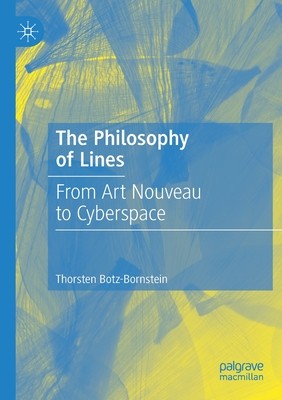
- We will send in 10–14 business days.
- Author: Thorsten Botz-Bornstein
- Publisher: Palgrave Macmillan
- ISBN-10: 3030653455
- ISBN-13: 9783030653453
- Format: 14.8 x 21 x 1.5 cm, minkšti viršeliai
- Language: English
- SAVE -10% with code: EXTRA
Reviews
Description
This book offers a philosophical exploration of lines in art and culture, and traces their history from Antiquity onwards. Lines can be physical phenomena, cognitive responses to observed processes, or both at the same time. Based on this assumption, the book describes the "philosophy of lines" in art, architecture, and science. The book compares Western and Eastern traditions. It examines lines in the works of Paul Klee, Wassily Kandinsky, and Henri Michaux, as well as in Chinese and Japanese art and calligraphy. Lines are not merely a matter of aesthetics but also reflect the psychological states of entire cultures. In the nineteenth century, non-Euclidean geometry sparked the phenomenon of the "self-negating line," which influenced modern art; it also prepared the ground for virtual reality. Straight lines, distorted lines, blurred lines, hot and cold lines, dynamic lines, lines of force, virtual lines, and on and on, lines narrate the development of human civilization.
EXTRA 10 % discount with code: EXTRA
The promotion ends in 22d.09:09:21
The discount code is valid when purchasing from 10 €. Discounts do not stack.
- Author: Thorsten Botz-Bornstein
- Publisher: Palgrave Macmillan
- ISBN-10: 3030653455
- ISBN-13: 9783030653453
- Format: 14.8 x 21 x 1.5 cm, minkšti viršeliai
- Language: English English
This book offers a philosophical exploration of lines in art and culture, and traces their history from Antiquity onwards. Lines can be physical phenomena, cognitive responses to observed processes, or both at the same time. Based on this assumption, the book describes the "philosophy of lines" in art, architecture, and science. The book compares Western and Eastern traditions. It examines lines in the works of Paul Klee, Wassily Kandinsky, and Henri Michaux, as well as in Chinese and Japanese art and calligraphy. Lines are not merely a matter of aesthetics but also reflect the psychological states of entire cultures. In the nineteenth century, non-Euclidean geometry sparked the phenomenon of the "self-negating line," which influenced modern art; it also prepared the ground for virtual reality. Straight lines, distorted lines, blurred lines, hot and cold lines, dynamic lines, lines of force, virtual lines, and on and on, lines narrate the development of human civilization.


Reviews